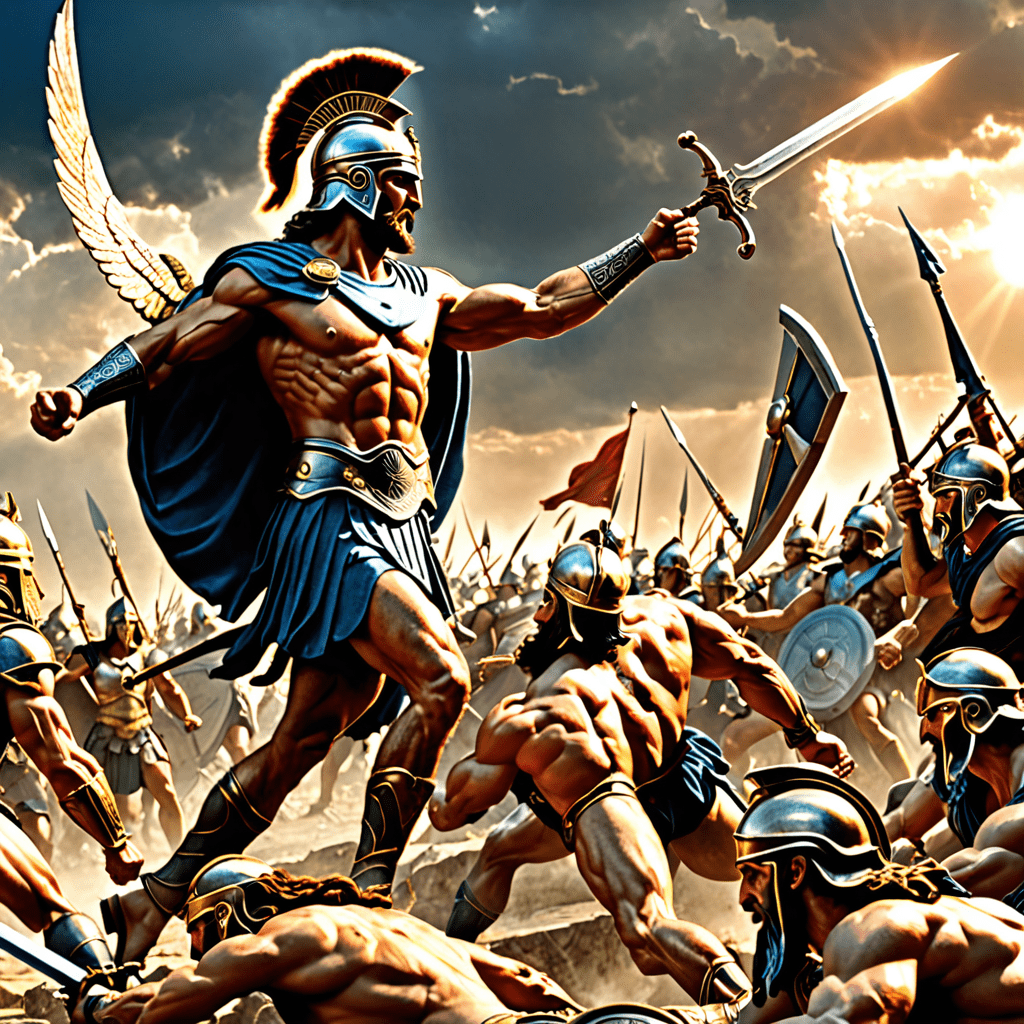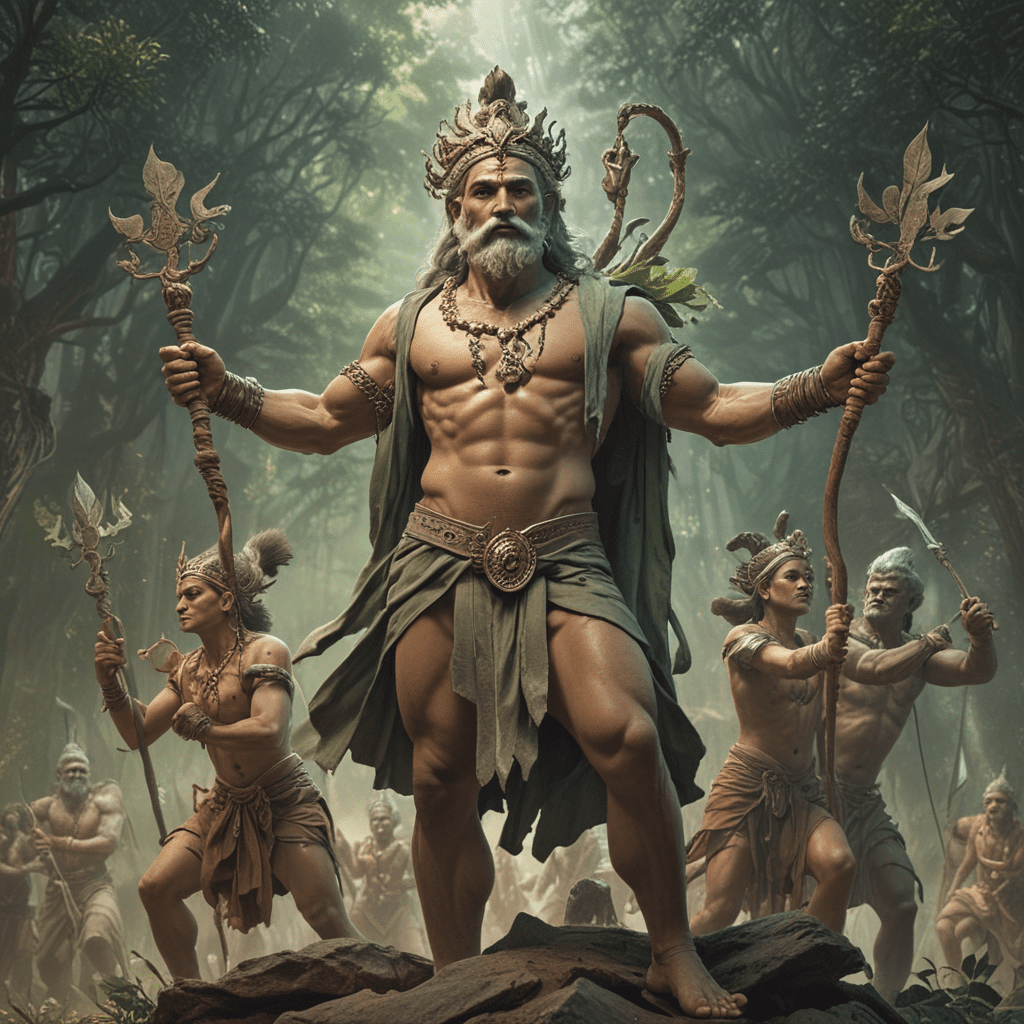The Power of the Ancients: Legendary Weapons That Still Inspire!
Introduction: The Enduring Legacy of Legendary Weapons
Throughout history, weapons have not only served practical purposes but have also taken on legendary status, becoming symbols of power, heroism, and cultural identity. Legendary weapons are defined as those extraordinary artifacts that possess unique qualities and are often imbued with magical or divine attributes. They play a significant role in mythology, history, and culture, influencing narratives across generations.
This article explores the origins of these legendary weapons, delving into their cultural significance and the enduring impact they have on modern storytelling. We will examine notable examples such as Excalibur, Mjolnir, Kusanagi-no-Tsurugi, Poseidon’s Trident, and the Bow of Artemis, and reflect on their ongoing influence in contemporary media.
The Epic Origins: How Legendary Weapons Were Born
The creation of legendary weapons often finds its roots in historical contexts where craftsmanship, mythology, and cultural beliefs intersected. In ancient societies, weapons were not merely tools for combat; they were often viewed as extensions of the gods or embodiments of a culture’s ideals.
Cultural significance can be observed in various ancient myths surrounding weapon creation, such as:
- Divine Forging: Many weapons were said to be forged by gods or mythical blacksmiths, imbuing them with extraordinary powers.
- Heroic Quests: The acquisition of a legendary weapon often involved a hero’s journey, where trials and tribulations led to the weapon’s ultimate bestowal.
- Symbol of Authority: In many cultures, possessing a legendary weapon conferred leadership or divine right to rule.
Excalibur: The Sword of Kings
One of the most famous legendary weapons is Excalibur, the mythical sword associated with King Arthur in Arthurian lore. According to legend, Excalibur was not just a weapon but a symbol of rightful sovereignty and the divine right to rule. Its origins vary, with some tales claiming it was given to Arthur by the Lady of the Lake, while others suggest it was drawn from a stone, proving Arthur’s worthiness.
The symbolism of Excalibur extends beyond mere power; it represents leadership, destiny, and the burden of kingship. Modern interpretations of Excalibur can be found in various forms of literature and media, such as:
- Films like “Excalibur” (1981) and “King Arthur” (2004)
- Television series like “Merlin” and “Once Upon a Time”
- Books and graphic novels that reinterpret Arthurian legends
Mjolnir: The Hammer of Thor
In Norse mythology, Mjolnir is the hammer wielded by Thor, the god of thunder. This legendary weapon is renowned for its immense power, capable of leveling mountains and returning to Thor’s hand after being thrown. Mjolnir symbolizes strength, protection, and the battle against chaos.
The influence of Mjolnir has permeated contemporary pop culture, particularly through:
- Marvel Comics, where Thor and his hammer are central to numerous story arcs
- Films in the Marvel Cinematic Universe, portraying Thor as a heroic figure
- Video games like “God of War” and “Marvel’s Avengers” featuring Mjolnir as a powerful artifact
Kusanagi-no-Tsurugi: The Sword of the Japanese Gods
Kusanagi-no-Tsurugi, also known as the Grass-Cutting Sword, is a legendary Japanese sword with deep mythological roots. According to Shinto mythology, it was discovered in the tail of an eight-headed dragon by the storm god Susanoo. This sword has played a crucial role in Japanese history and folklore, symbolizing valor and the divine connection to the imperial family.
In modern Japanese culture, Kusanagi has influenced various forms of media, including:
- Anime and manga such as “Naruto,” where swords often represent power and heritage
- Video games like “Final Fantasy,” where legendary weapons are pivotal to character development
- Films that explore themes of honor and legacy
The Trident of Poseidon: Mastery Over the Seas
Poseidon’s trident is a potent symbol in Greek mythology, representing mastery over the seas, earthquakes, and horses. As the god of the sea, Poseidon used his trident to create storms and calm waters, embodying both creation and destruction.
The trident’s significance can be seen in various adaptations in literature and film, such as:
- Disney’s “The Little Mermaid,” where King Triton wields a trident as a symbol of authority
- Rick Riordan’s “Percy Jackson” series, where Poseidon’s trident plays a vital role in the adventures of demigods
- Video games that allow players to wield Poseidon’s power in epic battles
The Bow of Artemis: The Strength of the Huntress
Artemis, the Greek goddess of the hunt, is often depicted with her legendary bow and arrows. This weapon signifies independence, strength, and the connection between humanity and nature. Artemis’s bow represents not just physical prowess but also the empowerment of women in mythology.
The influence of Artemis and her bow can be observed in modern female archetypes in media, including:
- Characters like Katniss Everdeen from “The Hunger Games,” who embodies the spirit of the huntress
- Film adaptations that highlight female empowerment and independence
- Video games featuring female protagonists skilled in archery and survival
Cultural Reinterpretations: Legendary Weapons in Modern Storytelling
In contemporary narratives, ancient weapons are frequently reimagined to fit modern contexts. These legendary artifacts often embody timeless themes of heroism, power, and identity, allowing them to resonate with current audiences.
Examples of how these weapons are integrated into modern storytelling include:
- Video games that allow players to engage with legendary weapons, enhancing the narrative experience
- Films that modernize ancient myths while retaining their core themes
- Literature that draws on mythical inspirations to create new and compelling stories
The Psychological Impact: Why We are Drawn to Legendary Weapons
The fascination with legendary weapons can be attributed to their rich symbolism and the psychological themes they evoke. These weapons often reflect humanity’s deepest desires for strength, power, and legacy. They serve as metaphors for:
- Heroism: The journey of the hero is often intertwined with the mastery of a legendary weapon.
- Identity: Many characters find their true selves through their connection to these powerful artifacts.
- Legacy: Legendary weapons symbolize the impact one can have on history and future generations.
Conclusion: The Lasting Inspiration of Ancient Weapons
The enduring influence of legendary weapons continues to shape modern culture, inspiring countless stories and characters across various media. From the tales of Excalibur to the might of Mjolnir, these weapons are not merely relics of the past but dynamic symbols that resonate with our contemporary experiences and aspirations.
As we explore these stories, we gain a deeper appreciation for the myths that have shaped our understanding of power, heroism, and identity. The legacy of these ancient weapons invites us to reflect on our own narratives and the legacies we wish to create.




